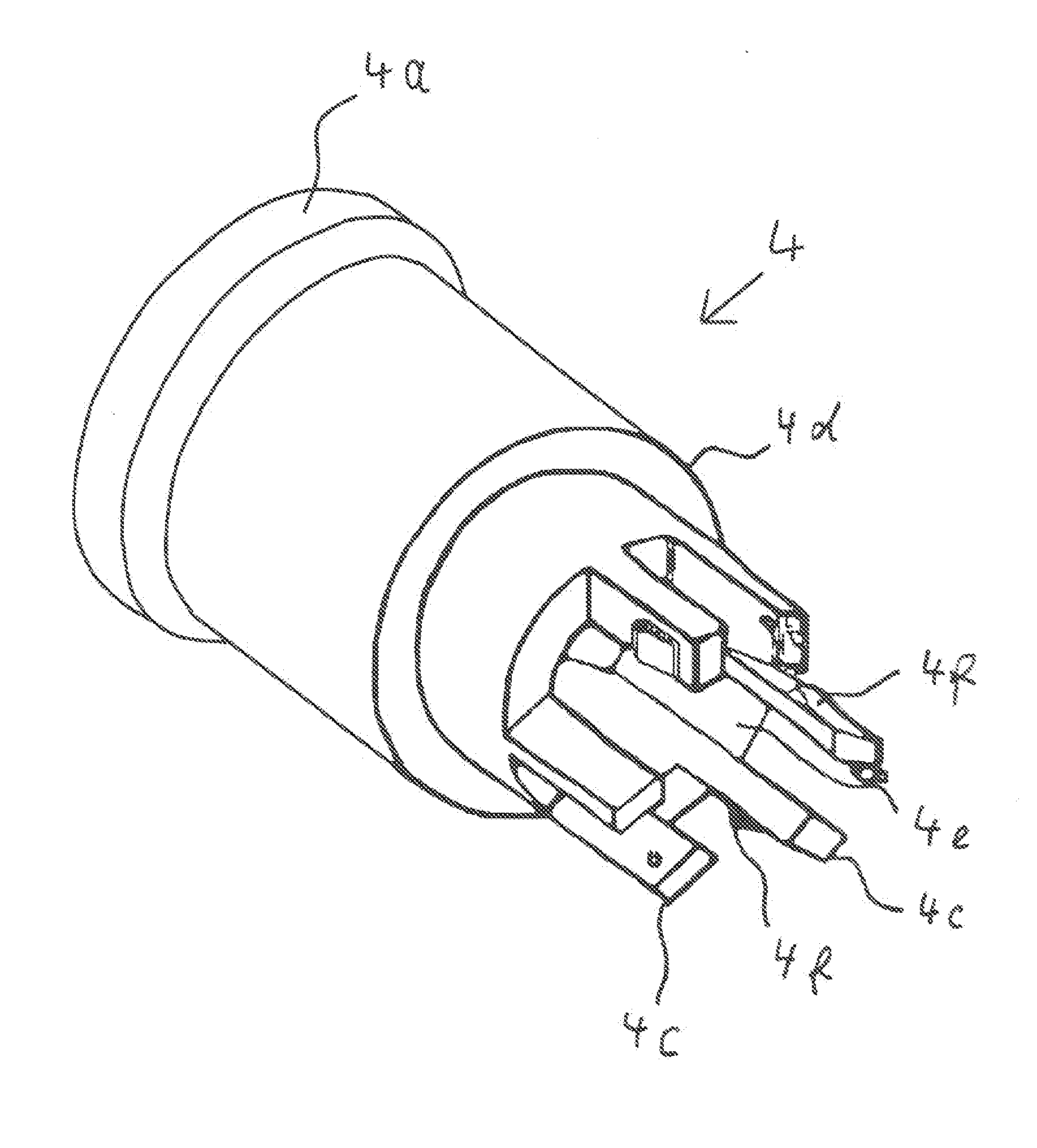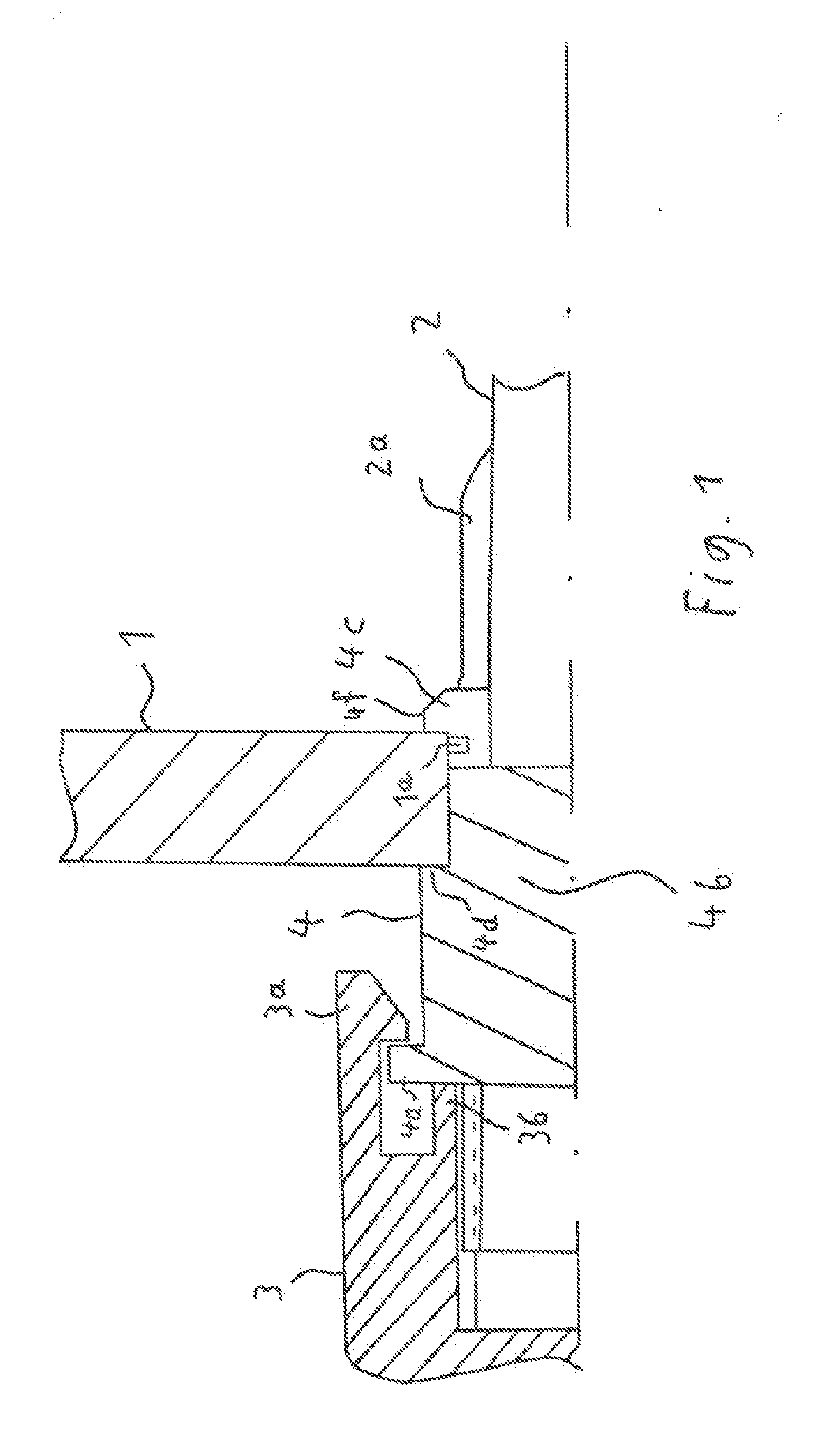Actuator device for the seat adjustment in a motor vehicle
- Summary
- Abstract
- Description
- Claims
- Application Information
AI Technical Summary
Benefits of technology
Problems solved by technology
Method used
Image
Examples
Embodiment Construction
[0021]Typically, a ratchet fitting 1, FIG. 1, is designed such that it exhibits a central borehole for receiving an actuator mechanism that is suited for receiving a transmission element 2 with the release of the ratchet fitting 1 occurring through a rotation of the transmission element 2. Typically a driver 1a is provided at the ratchet fitting 1, for example designed in the shape of a cam that interacts with a suitable contour of the transmission element 2. According to the invention, the transmission element 2, which may be a rod, a tube, a shaft or a similar torsionally stiff structure, is in its radial dimensions significantly smaller dimensioned than would be appropriate for conventional direct mounting in the borehole of the ratchet fitting 1 with regard to a secure support. Instead, a centering element 4 is pushed onto the transmission element 2 and inserted into the borehole in the ratchet fitting 1 until it reaches an end position defined by a stop. The stop may be, for ex...
PUM
 Login to View More
Login to View More Abstract
Description
Claims
Application Information
 Login to View More
Login to View More - R&D
- Intellectual Property
- Life Sciences
- Materials
- Tech Scout
- Unparalleled Data Quality
- Higher Quality Content
- 60% Fewer Hallucinations
Browse by: Latest US Patents, China's latest patents, Technical Efficacy Thesaurus, Application Domain, Technology Topic, Popular Technical Reports.
© 2025 PatSnap. All rights reserved.Legal|Privacy policy|Modern Slavery Act Transparency Statement|Sitemap|About US| Contact US: help@patsnap.com



